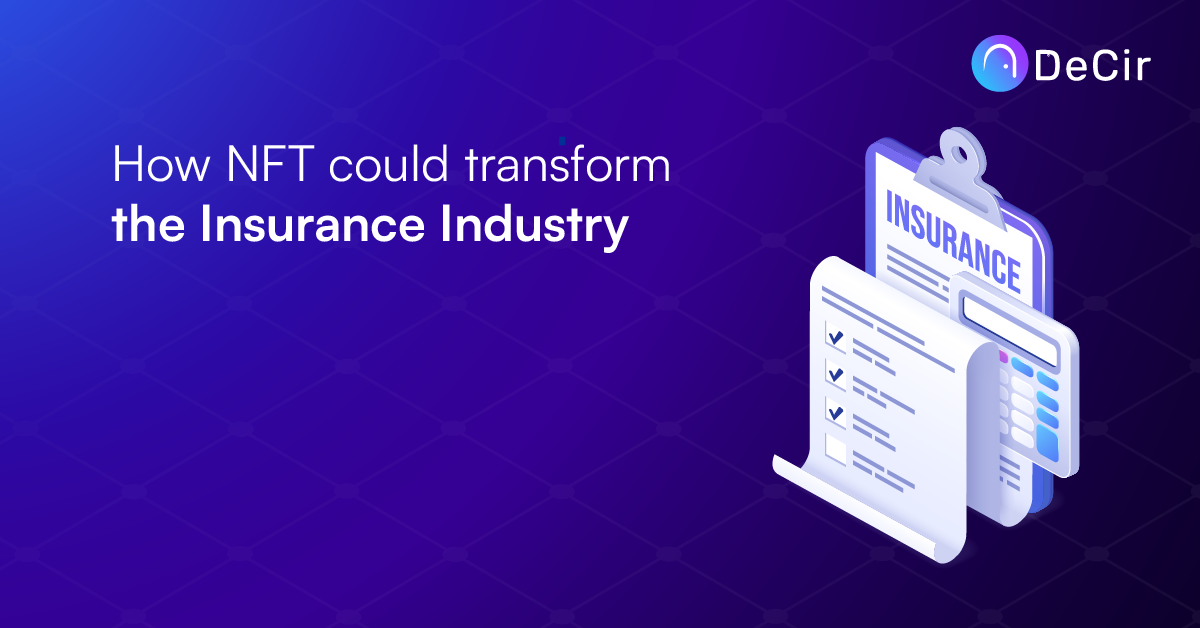Non-fungible tokens have moved away from the aesthetics that they initially represented. More than ever, NFTs are seeing increasing adoption among businesses. This largely stems from NFTs’ ability to serve as unique representations of assets (both physical and digital) on the blockchain. Their innate non-fungible attributes further help businesses create value and scarcity.
While this is already evident in industries such as art, entertainment, fashion, and luxury, the concept is still nascent in insurance. In this article, we dive into how NFT could transform the insurance industry.
TL;DR
- NFT adoption in the insurance industry is still in its infancy. Hence, not much has been documented or known at the moment.
- Insurance companies can relate with clients by issuing insurance classes as NFTs and activating payouts through smart contracts
- NFT insurance could also become an insurance class over the decade. It will help protect collectors against stolen art and fake NFTs.
Issuing Insurance on-chain
The main duty of insurance companies is to offer protection to clients in the eventuality of a loss or damage to insured assets. The modus operandi of the insurance industry is rooted in traditional finance where activities are centralized and coordinated.
Typical insurance policies are issued when a client signs an insurance agreement that covers a predetermined set of damages. This could be a client’s car, house, office, or even protection against death or accident. Clients are expected to pay a premium to seal these agreements.
Insurance industries could adopt NFT to further solidify their offering to clients. This will be through the issuance of NFTs as digital twins of the assets that are currently covered in their insurance package. Therefore, NFTs will serve as a permanent representation of the insurance policy, stored on the blockchain. The concept of issuing NFTs as digital twins for physical assets is no longer new as we have already seen brands such as Tiffany and Dolce & Gabanna go this path.
The issued NFTs could also be tied to blockchain smart contracts. For this to work, there would be the need to integrate blockchain Oracles into an insurance blockchain protocol. The Oracle will then serve as the feed which updates the protocol with the latest information about ongoing insurance agreements. The smart contracts containing an insurance policy, then automatically issue a payout to the affected client.
Also read: Why NFT is important in the metaverse
The Advent of NFT Insurance
NFTs are volatile assets. They are prone to price volatility and can see their price pump and plummet equally. Insurance companies, on the other hand, are built to help cushion the effect of loss and damages. Both insurance and NFT, therefore, seem like the perfect match.
The idea behind NFT insurance stems from the known fact that NFTs could represent valuable assets. Real estate, luxury cars, high fashion wear, and more, are now being issued as NFT. On this basis, NFT insurance could be an area that insurance companies could look into over the next decade.
NFT artworks that are worth millions of dollars could be insured against theft and forgery. NFT artworks such as Beeple’s “Everyday: The First Five thousand Days”, Crossroad, HUMAN ONE, and valuable pieces in the Cryptopunk collection, naturally fall into this class.
Similarly, NFT insurance could help protect collectors from falling prey to scam collections. Insurance NFT could protect collectors from Stolen NFT and plagiarized collections which is quite prevalent in the NFT space. Nonetheless, the frequent occurrence of scams will often mean that collectors still need to do their due diligence before buying NFT artwork.
Suggested reading: How members make money in a DAO
Conclusion
There are lots of untapped potentials for NFT. While its benefits have become obvious in certain industries, more sectors are still in the early stages of NFT adoption. The global insurance industry is one such sector that could benefit from the adoption of NFT both in the immediate and the near future.


